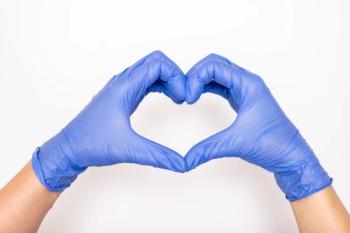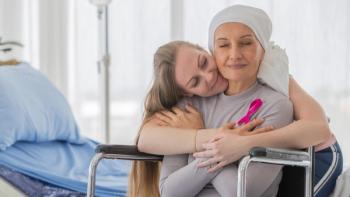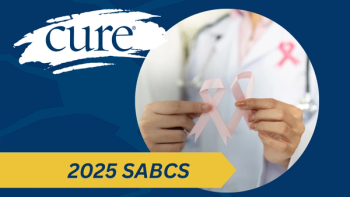
Myeloma Advocate Stresses Support for Caregivers in Black Community
Key Takeaways
- Kimberly Alexander's caregiving experience revealed a lack of awareness and support for multiple myeloma, especially in the Black community, driving her advocacy efforts.
- Caregivers should prioritize self-care, seek help, and connect with resources like That’s My Word® to navigate the challenges of supporting myeloma patients.
Kimberly Alexander urges care partners to seek support, prioritize self-care and push for better awareness so families in the Black community aren’t overlooked.
Kimberly Alexander, CEO of Level Health Agency, reflects on caring for her husband, former NFL linebacker Elijah Alexander, after his multiple myeloma diagnosis. She shares how his experience — including symptoms being overlooked — inspired her to advocate for awareness and better support in the Black community.
In an interview with CURE, Alexander encourages care partners to prioritize their own well-being, ask for help and connect with resources like That’s My Word® so no one has to navigate myeloma alone.
CURE: Can you share how your experience as a care partner for Elijah shaped your perspective on multiple myeloma and inspired your advocacy work within this community?
Alexander: My experience with multiple myeloma has now spanned 20 years. I first learned about it when Elijah was diagnosed. Neither of us had ever heard of myeloma, so we were completely caught off guard and trying to learn everything in real time. I remember thinking, “It’s cancer — they’ll remove it or treat it, and he’ll get better.” But then we learned it was a blood cancer, and back in 2005, the information out there was frightening.
I was heartbroken and overwhelmed, trying to understand a disease I knew nothing about and feeling like there weren’t many resources to help us. That experience is a big part of why I remain so committed to this work. I want to support others who might find themselves in the same place we were all those years ago.
So much has changed since then, and it has been incredible to see. Working with That’s My Word® and taking part in conversations like the recent BLKHLTH event in Atlanta means so much to me. Seeing patients and caregivers in the room, learning, connecting and sharing their stories — those conversations simply weren’t happening when Elijah was diagnosed. Being part of that today and knowing it can make a difference is incredibly meaningful.
What were some of the biggest challenges you faced as a caregiver, both emotionally and physically, and how did you navigate them?
Feeling like I didn’t have much help. I was incredibly young. I became Elijah’s caregiver at 32, and I didn’t even recognize that word for myself. I saw it as, “I’m his wife. He’s sick. This is what I have to do.” I was caring for him and trying to keep our household running with two young sons, and that was overwhelming. Many people didn’t understand multiple myeloma or what we were going through. On top of that, the kids were in elementary school bringing home germs, and myeloma often compromises the immune system, so a simple cold could really knock Elijah down. I was constantly trying to keep everything safe while balancing parenting and caregiving.
Working out became one of my escapes — a moment of solitude that helped refill my cup. I always tell people you can’t pour from an empty cup. When you’re caring for a patient, a household and yourself, you have to find some way to keep that balance.
What I appreciate now is how advances in technology help people build community. That’s what That’s My Word® is about: connecting and learning from others who understand this space. Back then, I didn’t have that support. People didn’t fully understand myeloma, so they didn’t realize I needed help — and I didn’t know how to ask for it. That’s why I always encourage care partners not to feel guilty about asking for help or taking time for themselves. A little bit of self-care is necessary if you’re going to keep caring for someone else.
What barriers to care or systemic issues have you seen across the board that disproportionately affect Black patients, and what changes do you hope to see through your advocacy work?
It starts with their symptoms not being taken seriously. That’s something I’ve heard again and again in conversations with people who have myeloma — and it was true for Elijah, too.
Elijah had played professional football for years and was diagnosed with myeloma a couple of years after he retired. He still looked like a linebacker, so when he complained about pain in his feet, people brushed it off. They’d say, “Of course your feet hurt — you played football.” But no one did any blood work. It actually took a doctor in another country to finally order tests, which is unbelievable to me.
I’ve since heard the same story from other myeloma patients: they go to the doctor, share their symptoms, and those symptoms are overlooked. That’s why it’s so important to have conversations like the one we had in Atlanta with BLKHLTH — spaces where we can talk about the symptoms of myeloma, share stories and make sure our community is aware. Because myeloma affects us more than anyone, we have to know what to look for and feel empowered to speak up.
If you feel ignored or dismissed, it’s OK to stand your ground and ask for more attention. It’s OK to get a second opinion. It’s OK to find another doctor who listens. And make sure to connect with resources like That’s My Word® — there’s so much valuable information there to help guide and support you.
Are there any symptoms or signs that Elijah had that you wanted to emphasize for patients to maybe watch out for?
It’s interesting to think back on Elijah’s symptoms. I sometimes wonder if he had more than he shared, because after years of professional football, he was conditioned to push through pain. By the time symptoms became noticeable, his disease was already more advanced.
The main symptom he mentioned early on was pain in his feet. Many people with myeloma experience back or bone pain, but for Elijah, his diagnosis came when things were already serious. He even had bubbles in his urine — his body’s way of trying to get rid of excess protein caused by the myeloma. It’s not a pleasant symptom to talk about, but I think it’s important to share. If someone sees that, even while brushing off other signs, it might be the thing that pushes them to get checked.
That’s why staying connected to organizations like BLKHLTH and campaigns through That’s My Word® is so important. They help people learn what symptoms to look out for and connect with others going through similar experiences.
What advice or guidance would you give to other care partners and families navigating myeloma, and how can they best support their loved ones while also caring for themselves?
One thing I always tell families and care partners is to recognize that people with myeloma don’t always look sick, and that can be really frustrating. When they’re not feeling well, they may just stay home, so others don’t see the struggle. Because of that, what myeloma patients go through — how hard it is to live with this disease and still try to keep going — can be dismissed. If you know someone is dealing with myeloma, offer help however you can, regardless of how they look on the outside.
For care partners, I always stress doing whatever supports you in supporting your loved one. At doctor appointments, record the conversation or take detailed notes so you can review it later. If something isn’t clear, ask more questions, look into resources and connect with other myeloma families.
When I was caring for Elijah, there weren’t as many resources as there are now. That’s why I’m so committed to making sure people get connected — whether it’s a support group, an advocacy organization, or tools like That’s My Word®.
Is there anything that you want to add?
One thing I always want care partners to hear is: Don’t feel guilty if you need a break. Looking back, one of the best things I did — even though I didn’t fully realize it at the time — was creating spaces where people didn’t know I had a loved one at home with cancer. It gave me a chance to step away, even just for 20 or 30 minutes, and feel normal for a moment.
Transcript has been edited for clarity and conciseness.
For more news on cancer updates, research and education,




